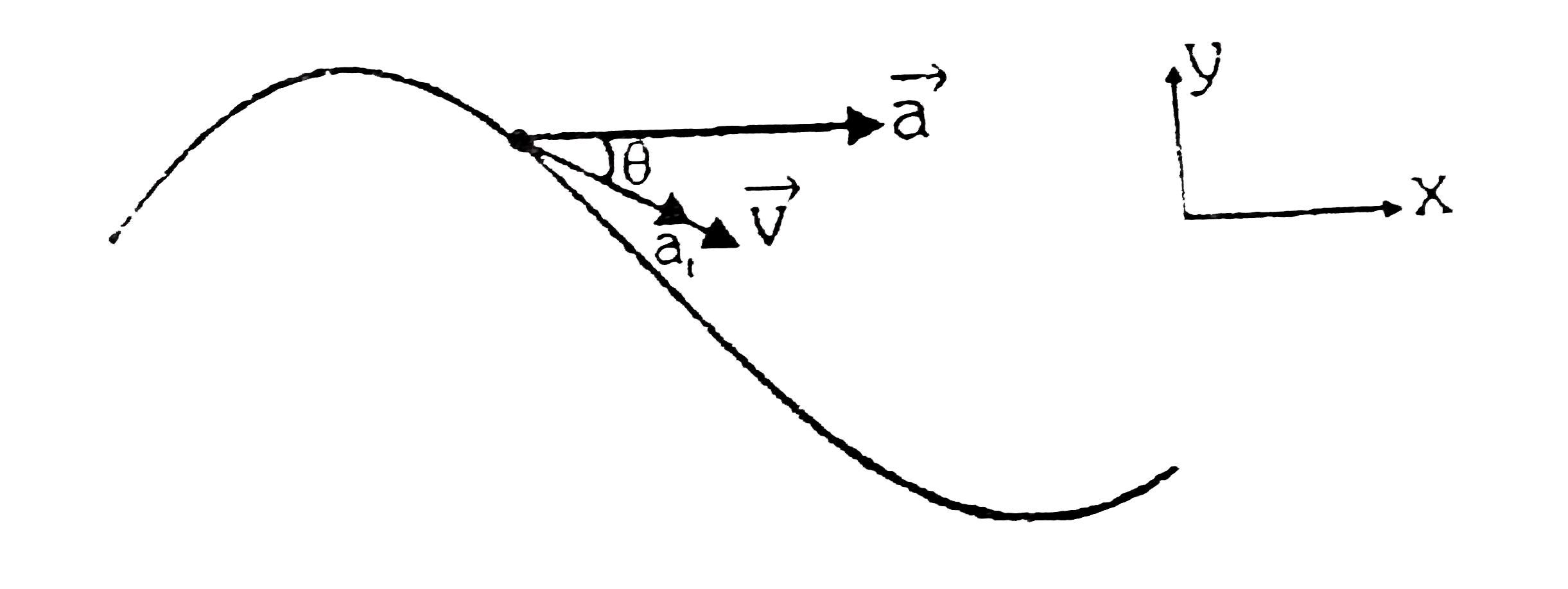Two particles of equal mass have velocities →v1=2ˆi=m/s−1 and →v2=2ˆjm/s−1. First particle has an acceleration →a1=(3ˆi+3ˆj)ms−2 while the acceleration of the other particle is zero. The centre of mass of the two particles moves in a path of.
circle
parabola
staright line
ellipse
To solve the problem step by step, we will analyze the motion of the two particles and determine the path of the center of mass.
Step 1: Identify the given data
We have two particles of equal mass:
- Particle 1:
- Velocity: →v1=2^im/s
- Acceleration: →a1=(3^i+3^j)m/s2
- Particle 2:
- Velocity: →v2=2^jm/s
- Acceleration: →a2=0
Step 2: Calculate the velocity of the center of mass (COM)
The formula for the velocity of the center of mass (→vCOM) for two particles is given by:
→vCOM=m1→v1+m2→v2m1+m2
Since both particles have equal mass m, we can substitute m1=m and m2=m:
→vCOM=m⋅(2^i)+m⋅(2^j)m+m=m(2^i+2^j)2m
This simplifies to:
→vCOM=2^i+2^j2=^i+^jm/s
Step 3: Calculate the acceleration of the center of mass (COM)
The formula for the acceleration of the center of mass (→aCOM) is given by:
→aCOM=m1→a1+m2→a2m1+m2
Substituting the values:
→aCOM=m⋅(3^i+3^j)+m⋅0m+m=m(3^i+3^j)2m
This simplifies to:
→aCOM=3^i+3^j2=32^i+32^jm/s2
Step 4: Analyze the relationship between →vCOM and →aCOM
We found:
- →vCOM=^i+^j
- →aCOM=32^i+32^j
Both the velocity and acceleration vectors are in the same direction (both are combinations of ^i and ^j). This means that the center of mass moves in a straight line.
Step 5: Conclusion
Since the velocity of the center of mass is parallel to its acceleration, the center of mass moves in a straight line.
Final Answer
The center of mass of the two particles moves in a path of a straight line.
---
We have two particles of equal mass:
- Particle 1:
- Velocity: →v1=2^im/s
- Acceleration: →a1=(3^i+3^j)m/s2
- Particle 2:
- Velocity: →v2=2^jm/s
- Acceleration: →a2=0
The formula for the velocity of the center of mass (→vCOM) for two particles is given by:
The formula for the acceleration of the center of mass (→aCOM) is given by:
We found:
- →aCOM=32^i+32^j
Since the velocity of the center of mass is parallel to its acceleration, the center of mass moves in a straight line.
The center of mass of the two particles moves in a path of a straight line.
Topper's Solved these Questions
- CENTRE OF MASS, IMPULSE AND MOMENTUMBOOK - DC PANDEY ENGLISHCHAPTER - CENTRE OF MASS, IMPULSE AND MOMENTUMEXERCISE - More a than one option is Correct
1 Videos
- CENTRE OF MASS, IMPULSE AND MOMENTUMBOOK - DC PANDEY ENGLISHCHAPTER - CENTRE OF MASS, IMPULSE AND MOMENTUMEXERCISE - Comprehension type questions
15 Videos
- CENTRE OF MASS, IMPULSE AND MOMENTUMBOOK - DC PANDEY ENGLISHCHAPTER - CENTRE OF MASS, IMPULSE AND MOMENTUMEXERCISE - Comprehension type questions
15 Videos
- CENTRE OF MASSBOOK - DC PANDEY ENGLISHCHAPTER - CENTRE OF MASSEXERCISE - Medical entrances gallery
27 Videos
- CENTRE OF MASS, LINEAR MOMENTUM AND COLLISIONBOOK - DC PANDEY ENGLISHCHAPTER - CENTRE OF MASS, LINEAR MOMENTUM AND COLLISIONEXERCISE - Level 2 Subjective
21 Videos
Similar Questions
Two particles of equal masses have velocities →v1=4ˆims−1 and →v2=4ˆjms−1. First particle has an acceleration →a1=(5ˆi+5ˆj)ms−2, while the acceleration of the other particle is zero. The centre of mass of the two particles moves in a path of
View SolutionA charged particle has acceleration →a=2ˆi+xˆj in a megnetic field →B=−3ˆi+2ˆj−4ˆk. Find the value of x.
View Solution
Knowledge Check
Two particles of equal mass have velocities v1=2ims−1 and v2=2jms−1 First particle has an acceleration a=(3i+3j)ms−2 while the acceleration of the other particle is zero. The centre of mass of the two particles moves in a path of
Aa.straight lineBb.parabolaCc.circleDd.ellipse
A particle moves with a tangential acceleration at=→a.ˆv where →a=(5ˆi)m/s2. If the speed of the particle is zero at x=0, then find v (in m/s) at x=4.9m.

View SolutionVelocity of a particle at some instant is v=(3ˆi+4ˆj+5ˆk)m/s. Find speed of the particle at this instant.
View SolutionVelocity of a particle is v=(2ˆi+3ˆj−4ˆk)m/s and its acceleration is zero. State whether it is 1-D, 2-D or 3-D motion?
View SolutionA point charge +q0 is projected in a magnetic field →B=(ˆi+2ˆj−3ˆk). If acceleration of the particle is →a=(2ˆi+bˆj+ˆk) then value of b will be
View SolutionA particle leaves the origin with initial velocity →v0=11ˆi+14ˆjm/s. It undergoes a constant acceleration given by →a=−225ˆi+215ˆjm/s2.
When does the particle cross the y-axis ?
View SolutionA charged particle moves with velocity →v=aˆi+dˆj in a magnetic field →B=Aˆi+Dˆj. The force acting on the particle has magnitude F. Then,
View SolutionA charged particle moves with velocity →v=aˆi+dˆj in a magnetic field →B=Aˆi+Dˆj. The force acting on the particle has magnitude F. Then,
View Solution
